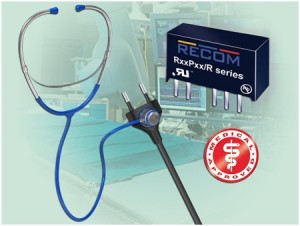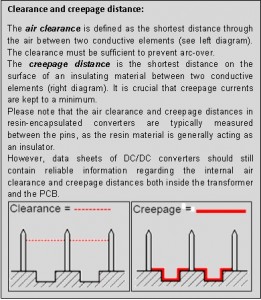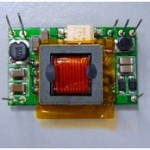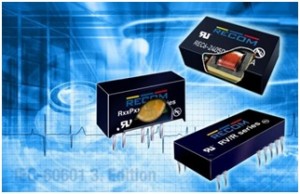 Only about 100 years ago, doctors had to rely on simple equipment such as microscopes and stethoscopes to make a diagnosis. Surgical procedures always posed a huge risk, as the equipment was somewhat rudimentary. The life and wellbeing of patients therefore primarily depended on the skills and experience of the surgeon. Today, hospitals are full of high-tech equipment and computerised devices that allow for much more detailed and early diagnoses and operations by keyhole surgery. These new technologies help minimise the risk to patients and ensure fast recovery. The technical progress made in the field of medicine, however, poses great challenges, not least as regards the power supply.
Only about 100 years ago, doctors had to rely on simple equipment such as microscopes and stethoscopes to make a diagnosis. Surgical procedures always posed a huge risk, as the equipment was somewhat rudimentary. The life and wellbeing of patients therefore primarily depended on the skills and experience of the surgeon. Today, hospitals are full of high-tech equipment and computerised devices that allow for much more detailed and early diagnoses and operations by keyhole surgery. These new technologies help minimise the risk to patients and ensure fast recovery. The technical progress made in the field of medicine, however, poses great challenges, not least as regards the power supply.
Insulation is one of the key issues here. This might not appear very obvious, as the relevant standard prescribes an insulation value of 3kVDC/1s. But what exactly does that mean?
To fully appreciate the complexity of the issue, let us have a closer look at what insulation actually means. The two main factors are the clearance and the creepage distance. The parameters define the distance that must be kept between the primary and the secondary circuit in a power supply. While the permissible values vary from application to application, they must always conform to binding standards. For more information, see the text box to the right.
Closely related to the clearance and the creepage distance is the insulation level, which determines the insulation voltage.
Insulation level

The insulation level determines the voltage that a DC/DC converter or power supply can safely withstand over a defined period of time. However, the relevant specifications are not always referring to the same thing, as they differ with the actual voltage kVDC or kVAC, and obviously with the specified time period (per second, minute, or permanent). In addition, one needs to take into account that the test voltage is often only applied for one second in the course of a hipot test. The values for longer periods of time are normally extrapolated and labelled in data sheets with “rated”.
For medical technical equipment, the main standards prescribe an insulation of a minimum of 3kVDC/1s. As this value is not always disclosed in the data sheets of the various manufacturers, it can be difficult to compare devices. That is why RECOM has devised an online “Isolation Calculator” that can be accessed at www.Recom-international.com (QR code in figure 1).
Insulation type
In contrast to the insulation level, the insulation type describes the type of insulation. There are three insulation types:
Functional insulation is the most straight-forward and reliable type of insulation between the input and output ends of a device. It normally consists of a varnish applied to the winding wires of the transformer. With this type of insulation, the wires are wound in layers around a shared core. With this method, it is possible to achieve reliable insulation of up to 4kVDC/1s.
 Much more effective and safe is double or basic insulation. With these methods, the primary and secondary windings are separated by an additional insulation barrier. In ring core transformers, this is achieved by placing a bridge at the centre of the ring core to physically separate the windings (figure 2, right). With this insulation, it is, however, not possible to wind the wires one over the other, so that the electromagnetic properties might be impaired, leading to a lower rate of efficiency. Effective insulation can also be achieved with what is known as a “potted core”. With this method of construction, the core and primary winding are placed in a plastic pot which is filled with epoxy. The secondary winding is then wound around the pot (figure 2 – left). While this solution is more expensive, it is the insulation type of choice where a high efficiency is required. Basic insulation caters for insulation values of up to 6.4kVDC/1s.
Much more effective and safe is double or basic insulation. With these methods, the primary and secondary windings are separated by an additional insulation barrier. In ring core transformers, this is achieved by placing a bridge at the centre of the ring core to physically separate the windings (figure 2, right). With this insulation, it is, however, not possible to wind the wires one over the other, so that the electromagnetic properties might be impaired, leading to a lower rate of efficiency. Effective insulation can also be achieved with what is known as a “potted core”. With this method of construction, the core and primary winding are placed in a plastic pot which is filled with epoxy. The secondary winding is then wound around the pot (figure 2 – left). While this solution is more expensive, it is the insulation type of choice where a high efficiency is required. Basic insulation caters for insulation values of up to 6.4kVDC/1s.


The best insulation type, however, is reinforced insulation. Here, the primary and the secondary windings are separated by a minimum of two separate insulation barriers. This is normally done by using special winding technology and by placing special foils between the windings (figure 3). In addition, certain specifications as regards the air clearance and creepage distances within the transformer as well as on the PCB must be met. Reinforced insulation provides effective insulation of up to 10kVDC/1s.
Certification for medical technical applications according to EN 60601-1, 3rd edition
On 1 June 2012, EN 60601-1, 3rd edition (Medical technical equipment and systems), came into force in EU member states. It would, however, be wrong to assume that the equivalent international standards based on the IEC standard were introduced on the same day. In the US, for instance, the UL 60601-1 standard (3rd edition) only applies since 1 July 2013, while the Canadian equivalent (CSA C22.2 no. 601.1) came into force on 1 April 2013. In many other countries, including Japan and Australia, the new standards are still being drawn up, and other states such as China have not even started the ratification process.

Another obstacle for manufacturers is the fact that the requirements regarding certification laid down in the existing standards vary greatly from country to country. In Europe, all devices (new and existing designs) must be certified according to the 3rd edition. In the USA and Canada, the new requirements only apply to new designs. For an overview of the new rules, see figure 4.

The main difference between the 2nd and the 3rd editions is the new distinction between patient and operator protection. The safety requirements for MOOP (Means of Operator Protection) are significantly lower than those for MOPP (Means of Patient Protection) and generally correspond to those laid down in EN 60950-1 (Information technology equipment – Safety). The requirements for MOPP are much more stringent than before, especially as regards insulation. Table 1 lists the insulation requirements for the two categories. It is important to note that all requirements for both means of protection must be met. This ensures that the patient or operator are still fully protected even in the event of failure of a safety device or construction.

Another important change is the increase of the maximum permissible earth leakage current by factor 10. This is a consequence of the new MOOP/MOPP concept. The total patient leakage current is classified based on the type of the device with which the patient is in contact (see text box). The closer the contact between the device and the patient, the lower the permissible leakage current. Table 2 shows the applicable limits for normal operation (NC – Normal Conditions) and fault conditions (SFC – Single Fault Conditions).
Apart from technical changes, the new standard now demands a formal risk analysis according to ISO 14971, which might pose a challenge to certain power supply manufacturers. Based on a risk index matrix, all risks that might potentially arise from the power supply must be analysed and weighted. The matrix takes into account the occurrence, probability (unlikely to frequent), and impact (insignificant to catastrophic) of the potential risk, based on a rating system from 1 to 5 in each category. If the risk index is ≤6 (probability x impact), the risk is deemed acceptably low. Risks with a higher index must be completely eliminated.
These requirements are difficult to assess, especially for DC/DC converter manufactures, as the end device, which obviously has a major influence on the risk level, is often not known. When choosing a converter, it is, however, advisable to obtain the respective risk management reports from the manufacturer. Only if these documents are in place, is it possible to deal with the power supply as a “black box”, which speeds up the certification process for the actual medical technical device.
Converters for medical technical equipment
 In order to meet the above requirements, and in particular the limits for insulation and leakage current, a combination of high-quality AC/DC for medical application and DC/DC converters is often the most efficient solution. This approach makes it easier to meet the stringent requirements of double patient protection (2x MOPP).
In order to meet the above requirements, and in particular the limits for insulation and leakage current, a combination of high-quality AC/DC for medical application and DC/DC converters is often the most efficient solution. This approach makes it easier to meet the stringent requirements of double patient protection (2x MOPP).
RECOM offers a wide range of medical-grade DC/DC converters from 0.25W to 15W. These converters are equipped with basic or reinforced insulation for ratings from 3kV to 10kVDC/1s. They are certified according to EN/UL 60601-1 3rd edition and EN/UL 60950-1, and do not contain any hazardous substances according to the RoHS2 and REACH Directives. As usual for RECOM devices, these products come with a three-year warranty.
Author Profile

Thomas Rechlin
Senior FAE for Europe of RECOM Engineering in Gmunden, Austria
+43(0)7612/9003-3102







